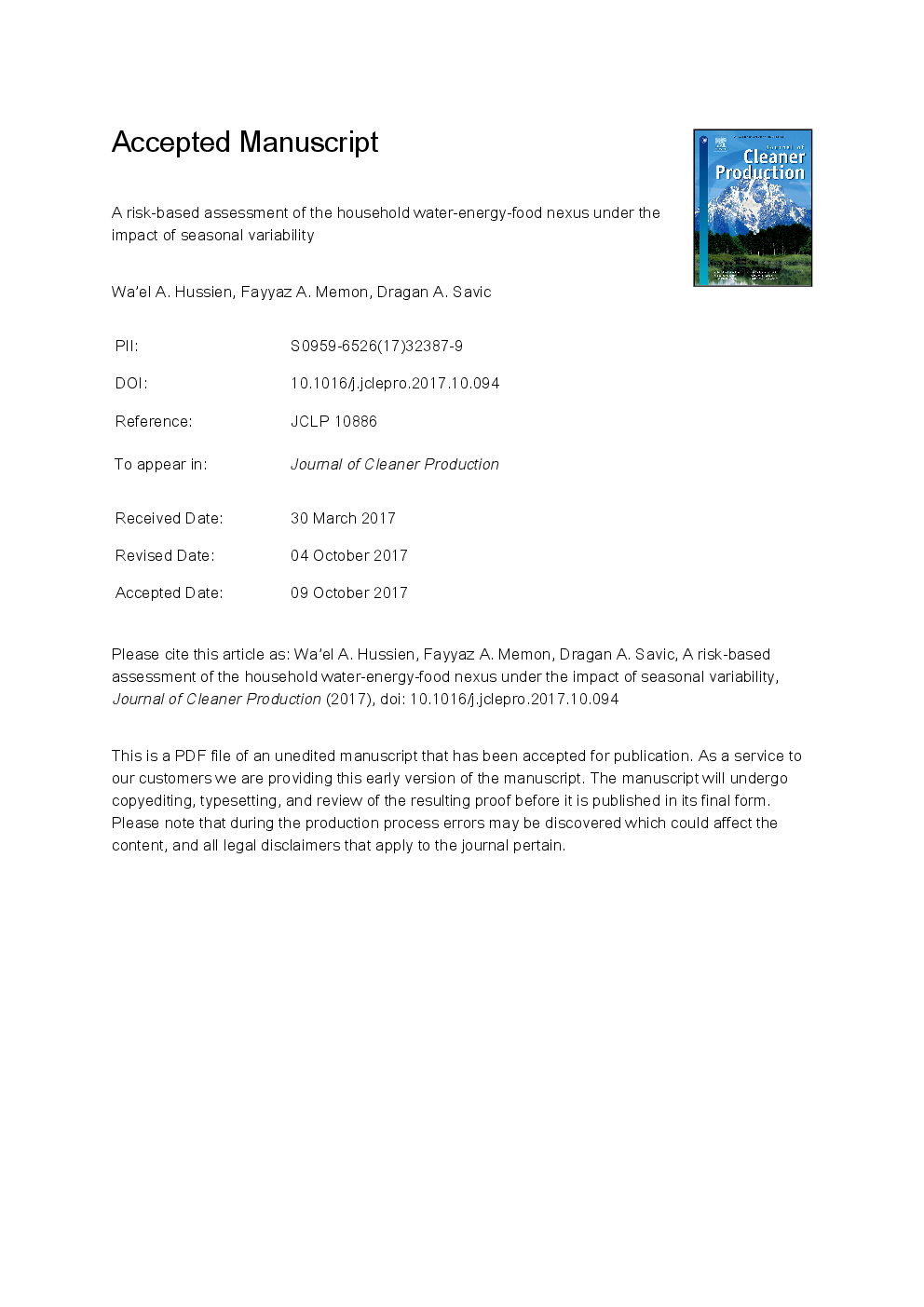ترجمه فارسی عنوان مقاله
ارزیابی مبتنی بر ریسک مربوط به رابطه آب و برق خانواده و غذا تحت تاثیر تغییرات فصلی
عنوان انگلیسی
A risk-based assessment of the household water-energy-food nexus under the impact of seasonal variability
| کد مقاله | سال انتشار | تعداد صفحات مقاله انگلیسی |
|---|---|---|
| 93950 | 2018 | 34 صفحه PDF |
منبع

Publisher : Elsevier - Science Direct (الزویر - ساینس دایرکت)
Journal : Journal of Cleaner Production, Volume 171, 10 January 2018, Pages 1275-1289
ترجمه کلمات کلیدی
آب نوشیدنی انرژی و مواد غذایی، خطر، تنوع فصلی، تعادل عرضه و تقاضا، استراتژی های مدیریت تقاضا،
کلمات کلیدی انگلیسی
Water-energy-food nexus; Risk; Seasonal variability; Supply-demand balance; Demand management strategies;

